|
| ||
| ||
| ||
| ||
|
p o r t f o l i o | ||
| ||
| ||
| ||
| ||
| ||
| ||
| ||
|
Next Show March 30 to April 28, 2018 “Paper Trails”, Group exhibition, Morgan Art of Papermaking Conservatory and Education, Cleveland, OH Opening Reception: Friday, March 30, 2018 6-9pm | ||
|
Junko was selected to be a finalist for Washington DC National Cherry Blossom Festival Poster 2010 | ||
| ||
|
CONTACT Junko Yamada 8008 35th Avenue #1E Jackson Heights, NY 11372 917-913-7487 Send Us  E-mail
E-mail
© Copyright 2012 JunkoYamada.com All Rights Reserved. |
| Additional work from Japan Trip 2010 |
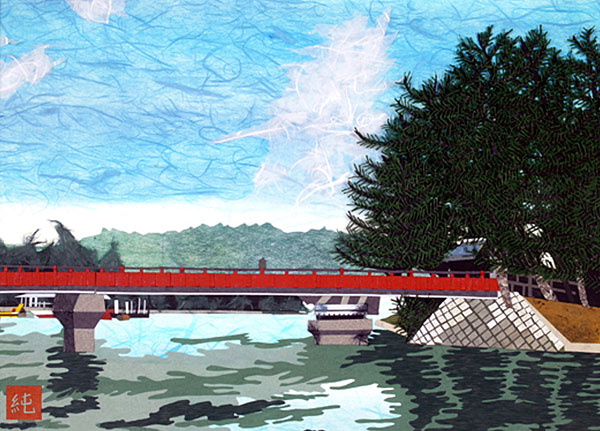
Amanohashidate, 16" X 18", 2013
Price on Request
Amanohashidate is one of Japan's scenic views. The sandbar is located in Miyazu Bay in northern Kyoto Prefecture. It forms part of the Tango-Amanohashidate-Oeyama Quasi-National Park.
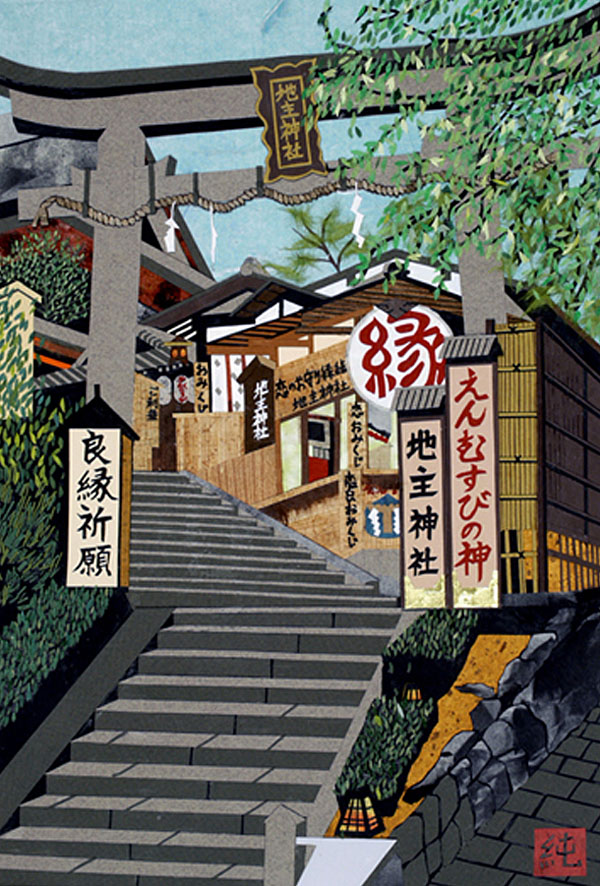
Jinushi Shrine, 20" X 16", 2013
Price on Request
Jinushi Shrine is located in the eastern part of Kyoto city. It is very famous as God of marriage.

Kasuga Taisha, 20" X 16", 2014, sold
Kasuga Taisha is a Shinto Shrine in the city of Nara in Nara prefecture in Japan. Established in 768 AD and rebuilt several times over the centuries, it is the shrine of the Fujiwara family. The interior is famous for its many bronze lanterns, as well as the many stone lanterns that lead up the shrine.
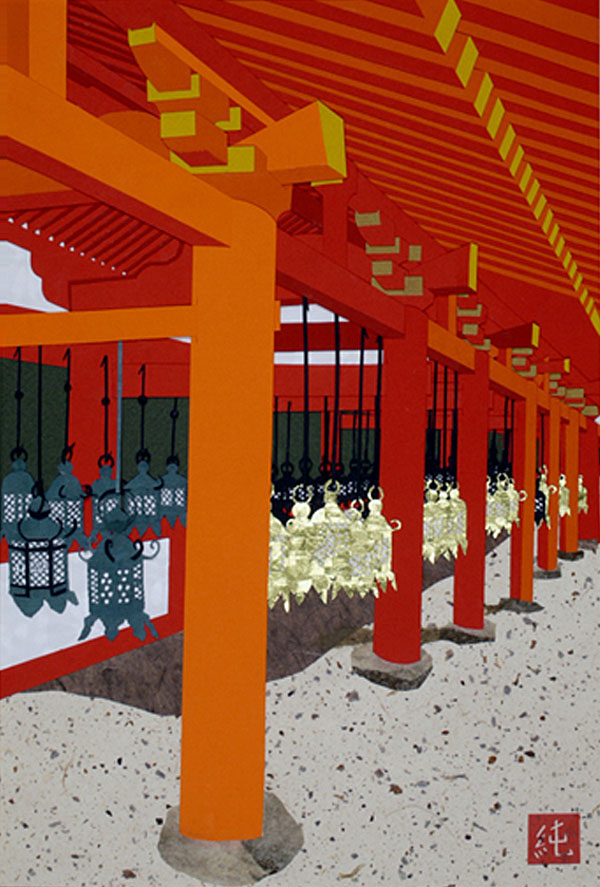
Kauga Taisha Red, 20" X 16", 2014
Price on Request
Kasuga Taisha, and Kasugayama Primeval Forest near it, are registered as a UNESCO World Heritage Site as part of the "Historic Monuments of Ancient Nara".
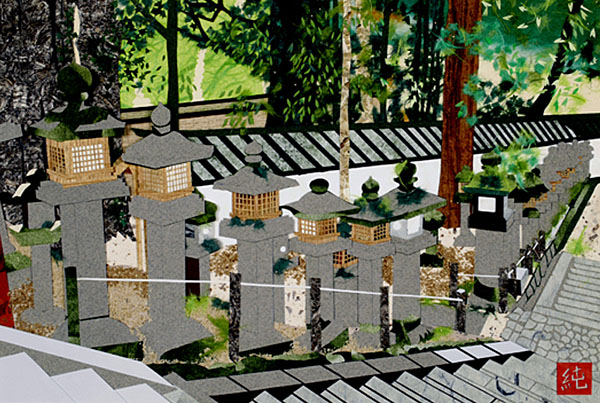
Kasuga Taisha Stone, 20" X 16", 2014
Price on Request
www.kasugataisha.or.jp

Ninenzaka, 20" X 16", 2014
Price on Request
Ninenzaka and Sannenzaka are one of Kyoto's most beautiful walks is in the hills of the eastern part of the city, or Higashiyama (east mountain). These contiguous streets are filled with quaint shops in Japanese style buildings. Aside from the telephone wires overhead, this part of Kyoto is among the very few areas that present a unified wooden cityscape.
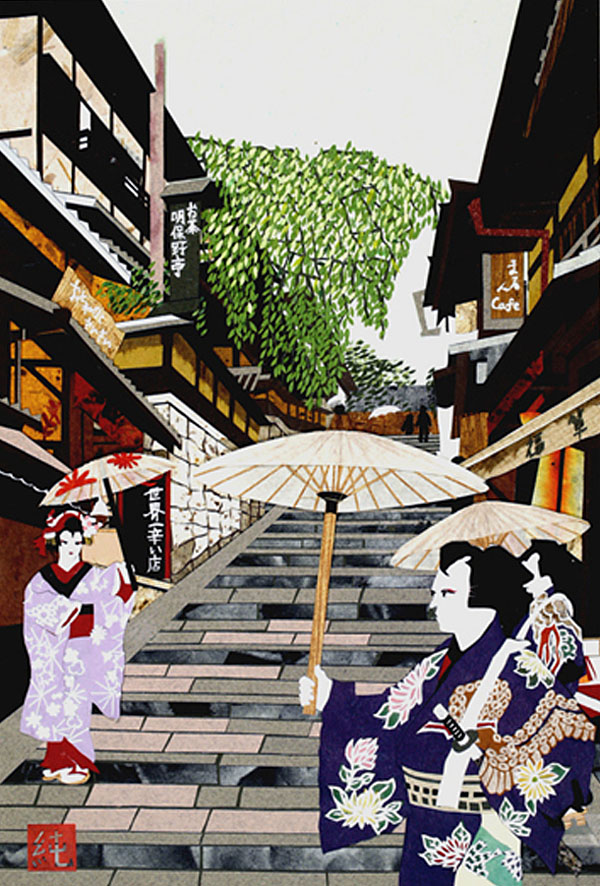
Ninenzaka and Sannenzaka, 20" X 16", 2014
Price on Request
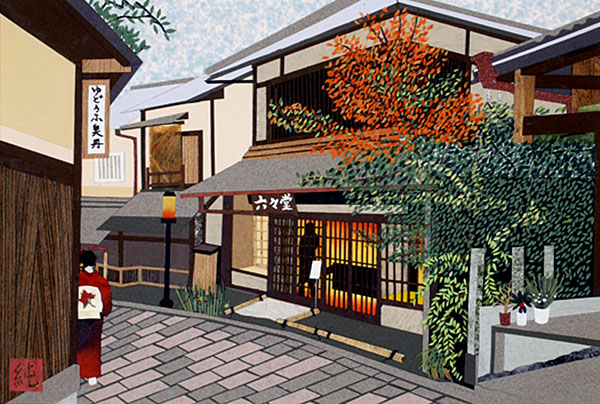
Ninenzaka and Sannenzaka, 16" X 20", 2014
Price on Request

Ninenzaka, 16" X 20", 2014
Price on Request
http://japanvisitor.blogspot.com/2009/01/ninenzaka-sannenzaka-kyoto.html

Akebono Tei, 16" X 20", 2014
Price on Request
Akebono Tei tea house is located in Sannenzaka in Kyoto city. It was used as restaurant/hotel. It is famous place because of Sakamoto Ryoma (January 3, 1836 - December 10, 1867) who was a prominent figure in the movement to overthrow the Tokugawa shogunate during the Bakumatsu period in Japan used to go there around 1860.

Nijo Castle, 16" X 20", 2014,
Price on Request
Nijo Castle is a truly impressive fortified complex; Nijo Castle was built in 1603 as the official residence of the first Tokugawa shogun. With its moats, walls, secret passageways and hidden chambers, the heavily fortified castle stands as a defiant symbol of the shogun's power. Nijo Castle is in the southwest of the city. The traditional palace gardens provide a tranquil retreat for a stroll. Designed by a tea master, they offer seasonal photo opportunities of camellias, blossoms, azaleas, maples, water and rock gardens.